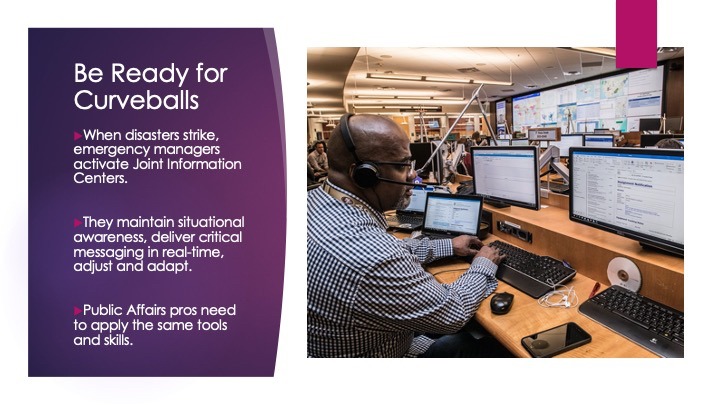3 ‘firefighting’ lessons for public affairs pros
Here’s a peek at how public affairs pros can keep pace with change—courtesy of Scott Thomsen, who will share more insights in Ragan’s March 4 Speechwriters & Public Affairs Conference.

Public affairs pros work methodically and strategically, sometimes targeting government influencers over the span of months or even years. But 2020 changed all that—and rapid response is increasingly part of the job.
Here are three ways to ramp up your public affairs strategy so it’s more responsive—with insights from a FEMA-trained public affairs pro who’ll share how to “put out fires” in Ragan’s March 4 Speechwriters & Public Affairs Conference:
1. Semper paratus! (always ready). “Our firefighters never know when they’ll get an emergency call and need to jump in an engine to respond,” says Scott Thomsen, director of communications and public affairs for the Ventura County Fire Department (VCFD) and president of National Association of Government Communicators. “Public affairs pros need to prepare the same way.”
“It’s a mindset more than anything else,” Thomsen says. “Be willing to step out of your typical planning cadence and mix things up.”
2. Implement tabletop exercises. “Firefighters train constantly to be ready for the unexpected,” he adds. “While public affairs pros can’t commit to daily drills, we can implement regular tabletop exercises.”
Quarterly tabletop drills can provide a solid roadmap to help you manage and assess your incident response protocols, procedures and messaging. However, most organizations tend to hold them annually. Cadence depends on organizational structure, risk exposure and your changing business environment.
“Being ready also means constant monitoring,” adds Thomsen. “Most public affairs roles include emergency support, but it’s important to apply the same tools and skills used in a joint information center to your daily work—even when alarm bells aren’t ringing.”

3. Become more of a data scientist. “Rapid response is important, but that doesn’t mean you want to jump right into the fire,” says Thomsen. “Map it out first.”
“Data will tell you how to react,” he says. “Read the data faster and act on it to realign more quickly. If you don’t know where to start, use social listening tools and software.”
Popular choices include Hootsuite, Google Alerts and even SEMRush.
“If you can’t invest in a tool of your own, piggyback on the data and insights of your other internal partners like HR or customer service,” suggests Thomsen.
Brian Pittman is the Dean of Ragan Training and a Ragan Communications event producer.






